Cologne
As our ship sailed into Cologne, we were greeted by a fireworks display near the cathedral.
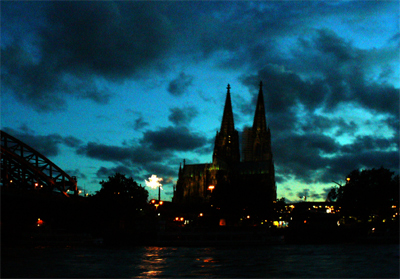
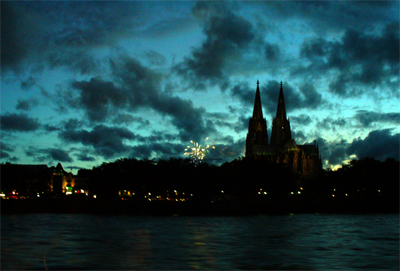
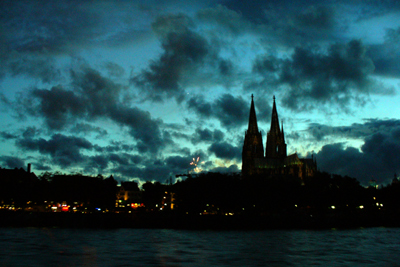
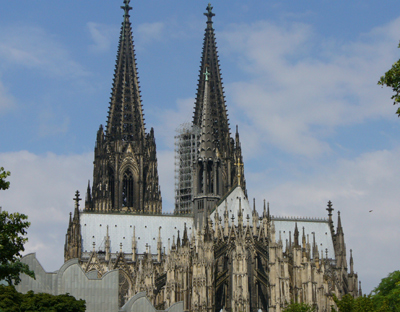
Our city walk the next morning brought us to a view of the cathedral from the rear. The cathedral building started in 1248 and was completed in 1880.
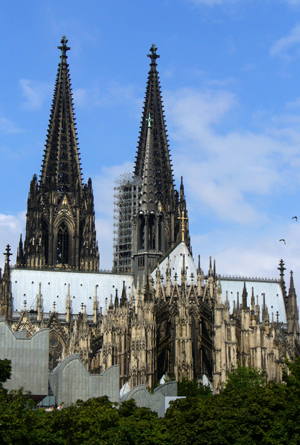
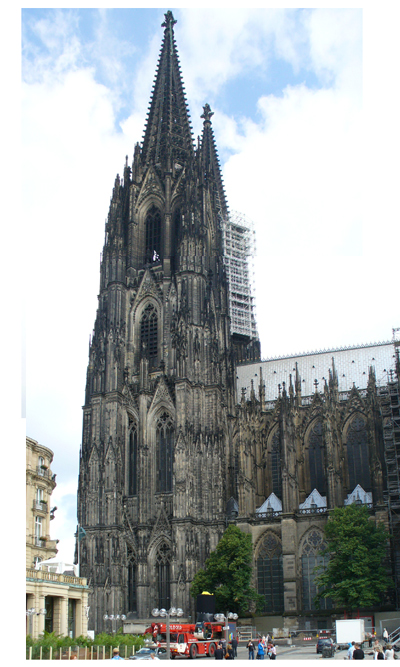
A side view of the cathedral.
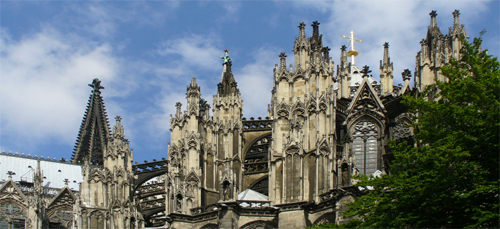
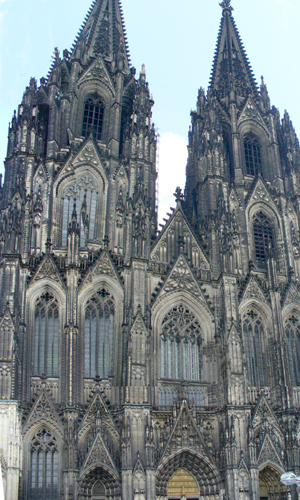
A partial view of the front.
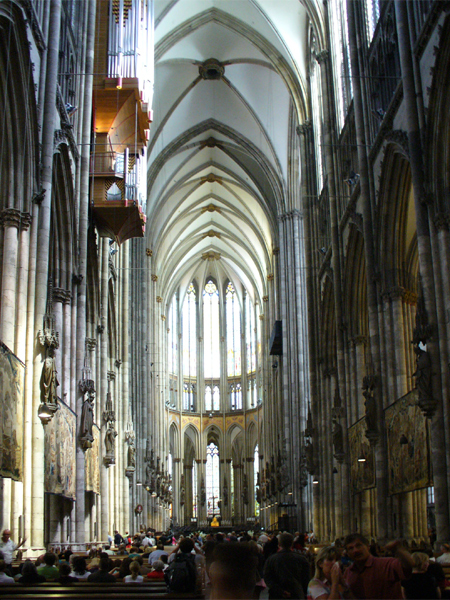
The magnificent interior. The nave is 472 feet long, 148 feet wide and 143 feet high.
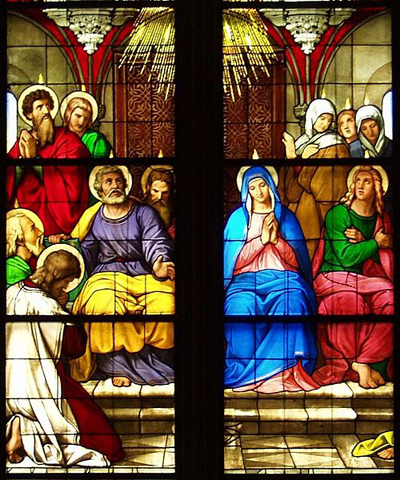
A stained glass window depicts the Vigin and St. Peter. (Photo from Wikipedia.)
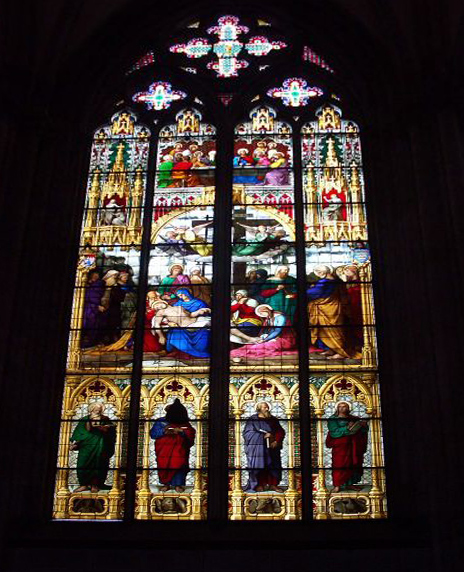
Another stained glass with the four evangelists depicted at the bottom.(Photo from Wikipedia.)
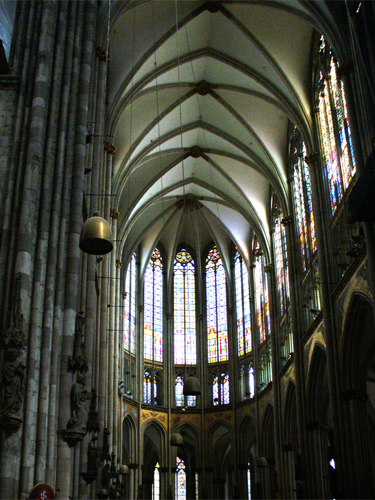
One last look at the interior.

In the Romanic-German Museum is the Dionysos Mosaic, made up of approx. 1.5 million mosaic tiny stones and almost 33 feet long and 23 feet wide. It dates back to the years 220/230 AD, when it covered the floor of the central banqueting room of a 20-room villa In 355 AD, this villa, together with many others, was destroyed, when the Franconians conquered Cologne for the first time. For centuries it remained buried. It was only rediscovered during excavations for the Cathedral bunker in 1941. Pictured here is the central panel shows a young, drunken Dionysos, leaning on a Satyr.
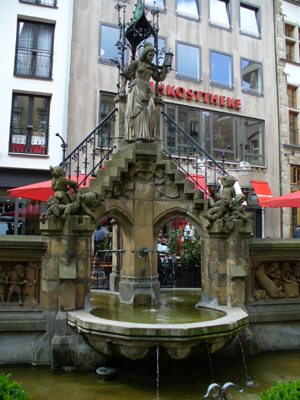
This is the Elves' Fountain, which tells the story of the elves who are said to have done all the work of the citizens of Cologne during the night, so that the inhabitants of Cologne could be very lazy during the day. According to the legend, this goes on until a tailor's wife gets so curious to see the elves that she scatters peas onto the floor of the workshop to make the elves slip and fall. The elves, being infuriated, disappear and never return. From that time on, the citizens of Cologne have to do all their work by themselves.
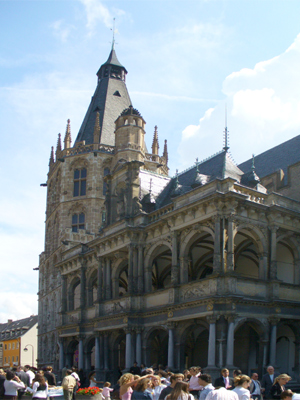
The town Hall with a crowd of people outside waiting for the bride and groom.
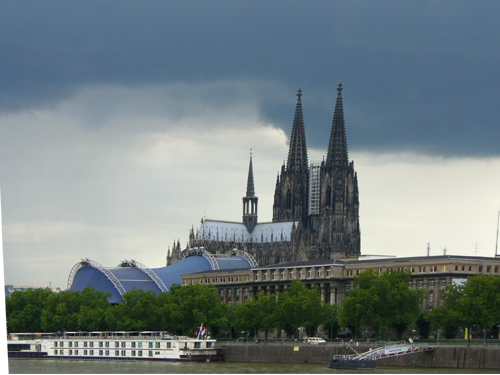
One last look at Cologne as the ship sails away.

